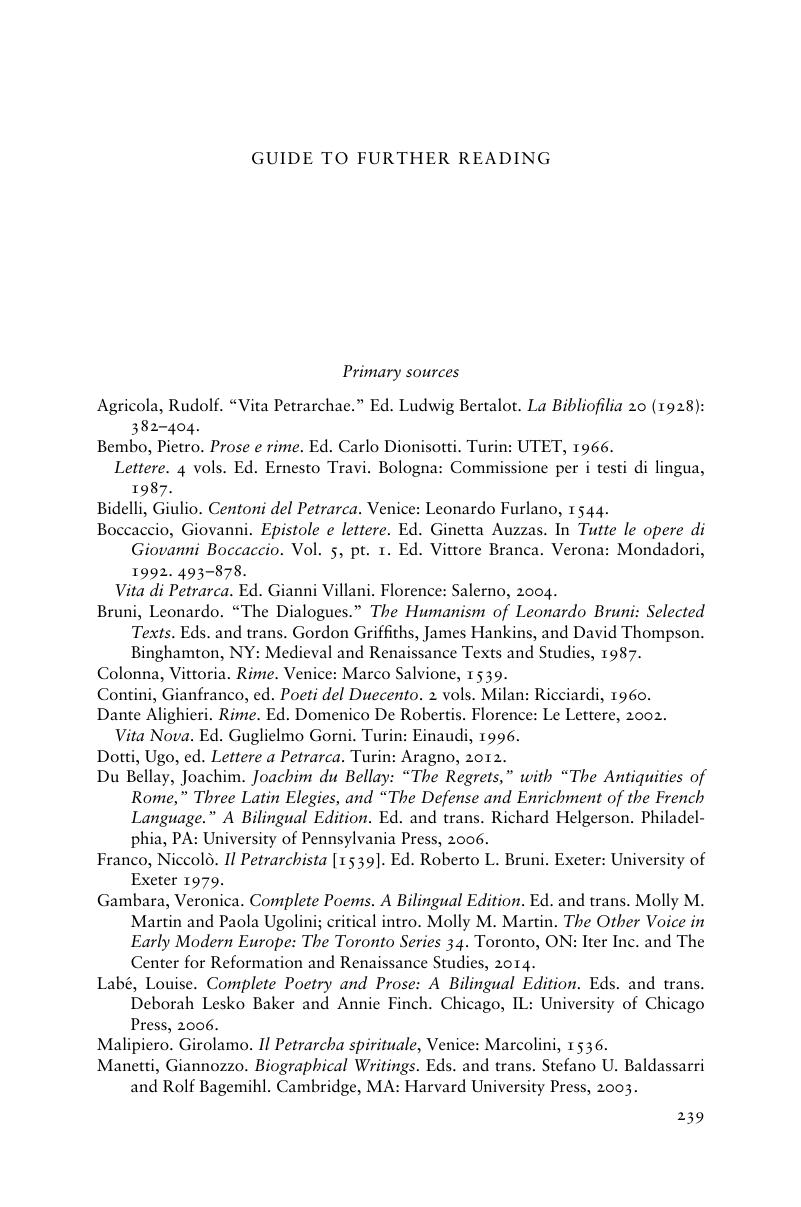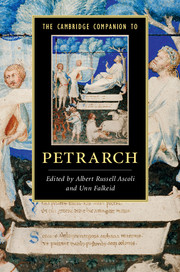Book contents
- The Cambridge Companion to Petrarch
- The Cambridge Companion to Petrarch
- Copyright page
- Dedication
- Contents
- Contributors
- Book part
- Chronology
- Glossary
- Introduction
- Part I Lives of Petrarch
- Part II Petrarch's works: Italian
- Part III Petrarch's works: Latin
- Part IV Petrarch's interlocutors
- Part V Petrarch's afterlife
- Part VI Conclusion
- Guide to further reading
- Index
- Cambridge Companions to…
- References
Guide to further reading
Published online by Cambridge University Press: 05 November 2015
- The Cambridge Companion to Petrarch
- The Cambridge Companion to Petrarch
- Copyright page
- Dedication
- Contents
- Contributors
- Book part
- Chronology
- Glossary
- Introduction
- Part I Lives of Petrarch
- Part II Petrarch's works: Italian
- Part III Petrarch's works: Latin
- Part IV Petrarch's interlocutors
- Part V Petrarch's afterlife
- Part VI Conclusion
- Guide to further reading
- Index
- Cambridge Companions to…
- References
Summary

- Type
- Chapter
- Information
- The Cambridge Companion to Petrarch , pp. 239 - 251Publisher: Cambridge University PressPrint publication year: 2015



